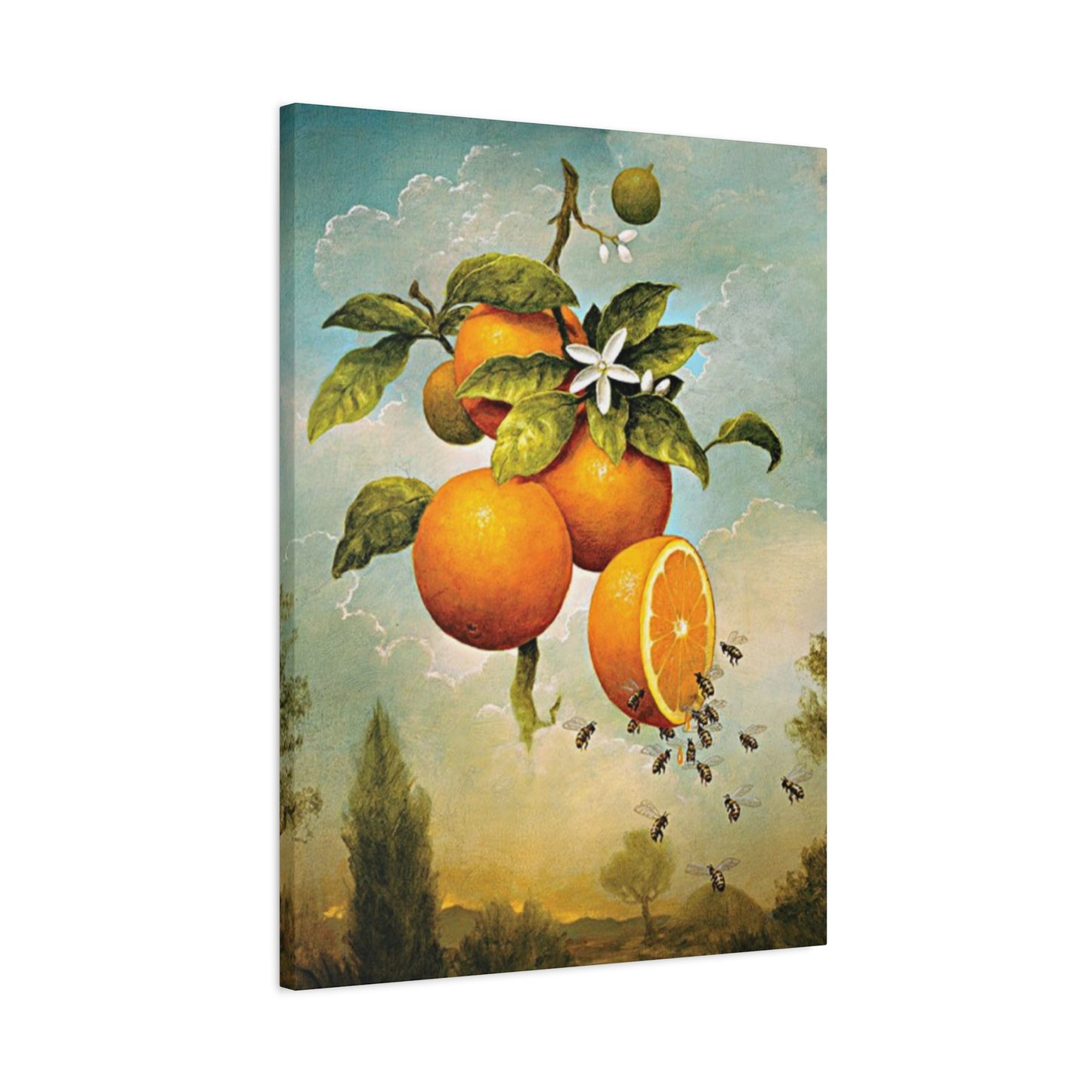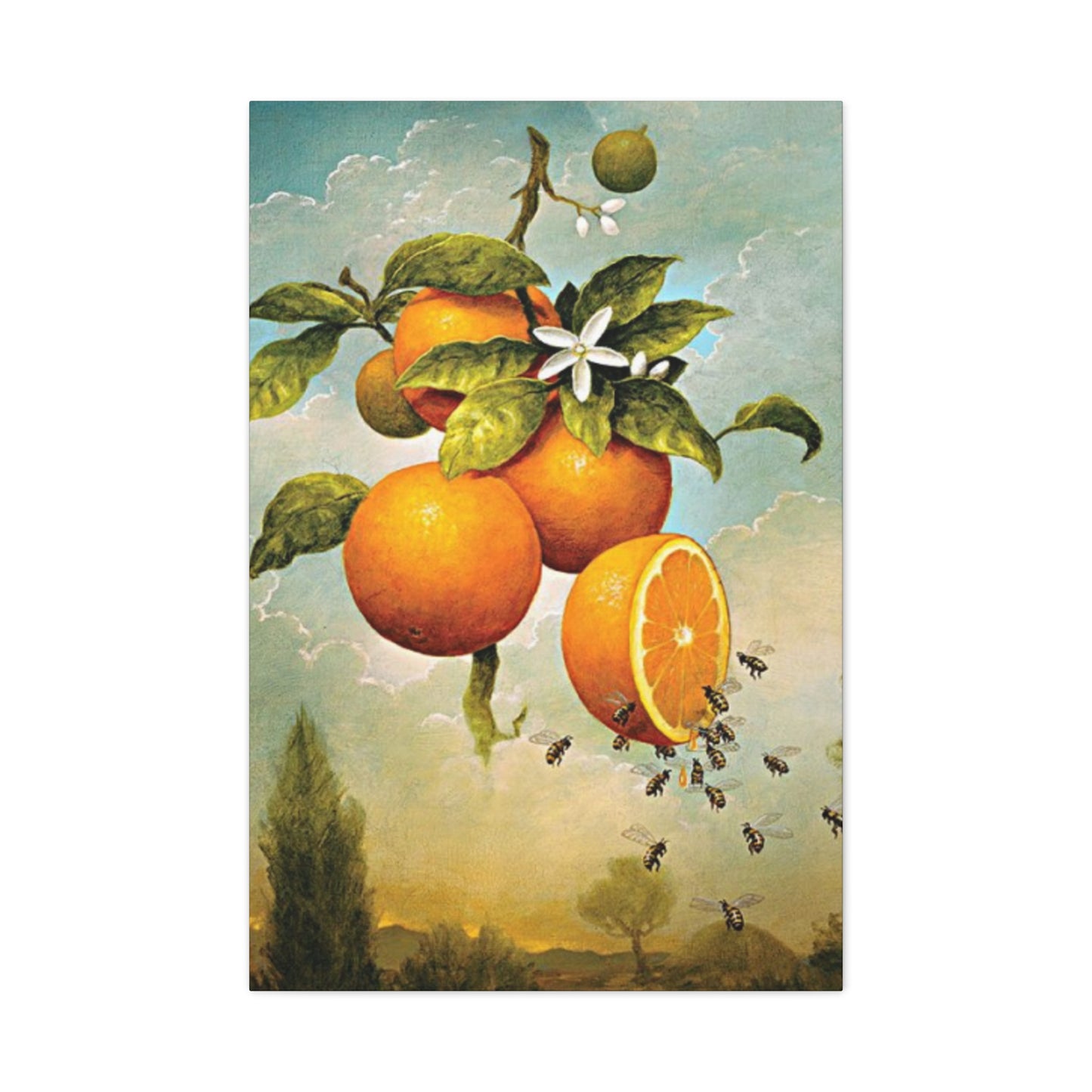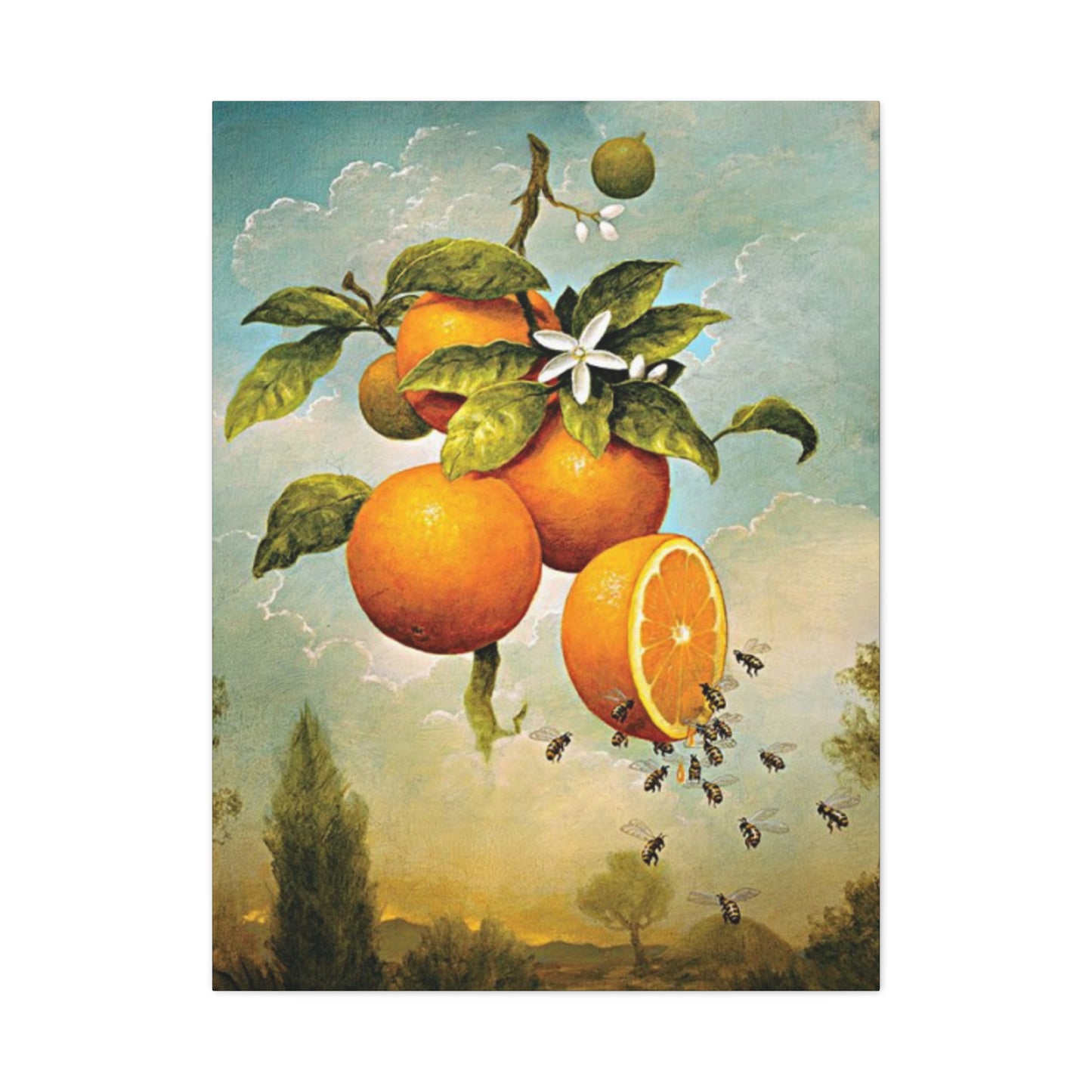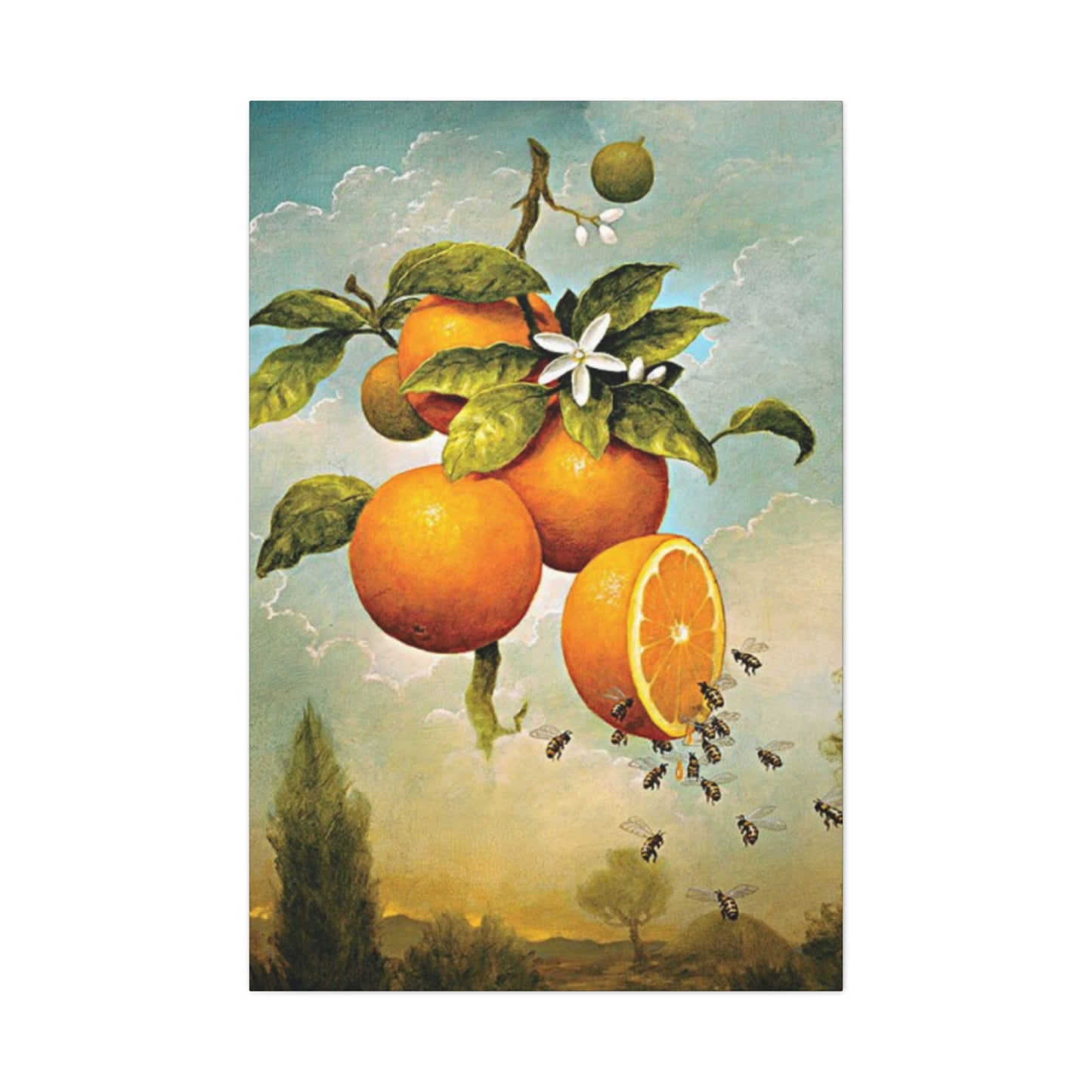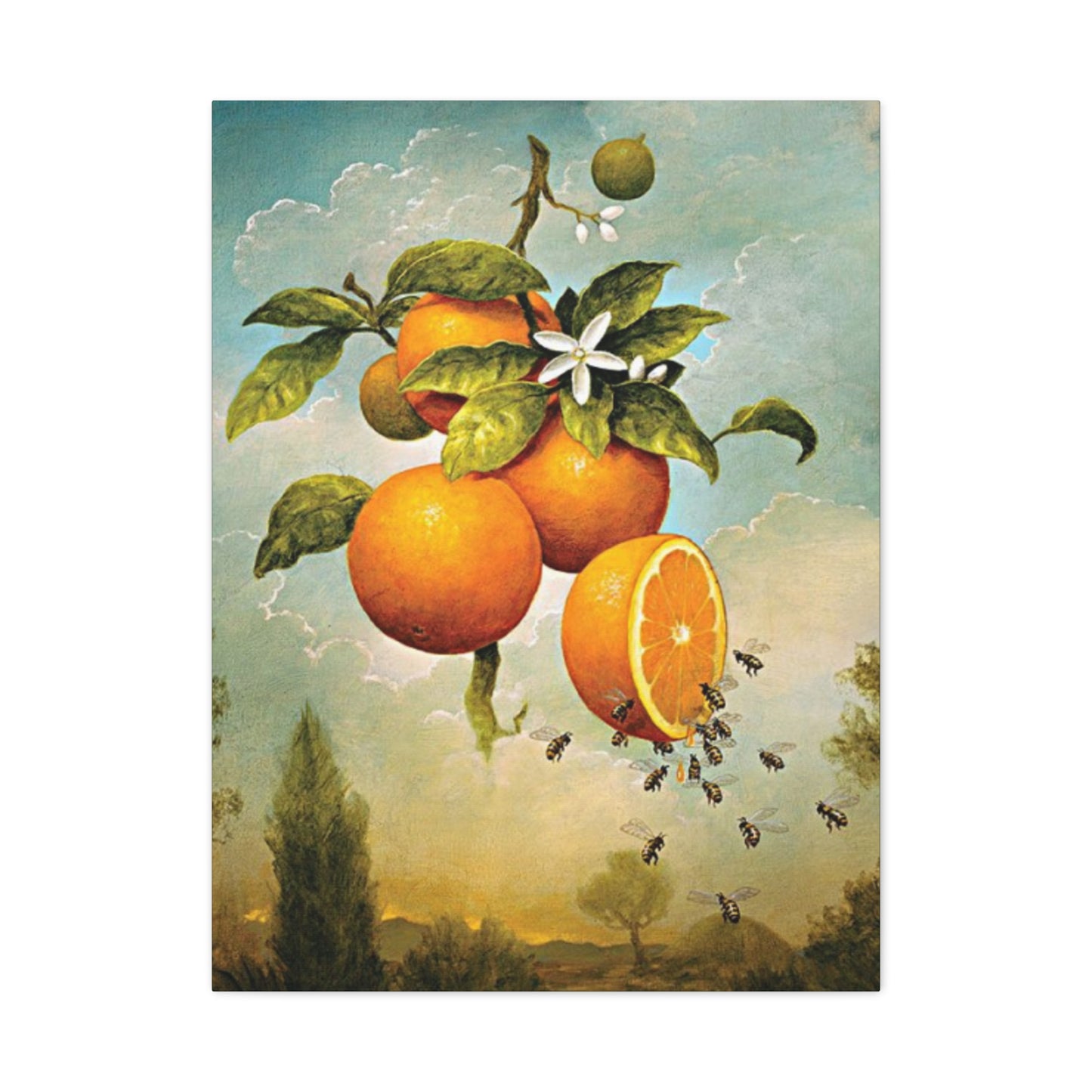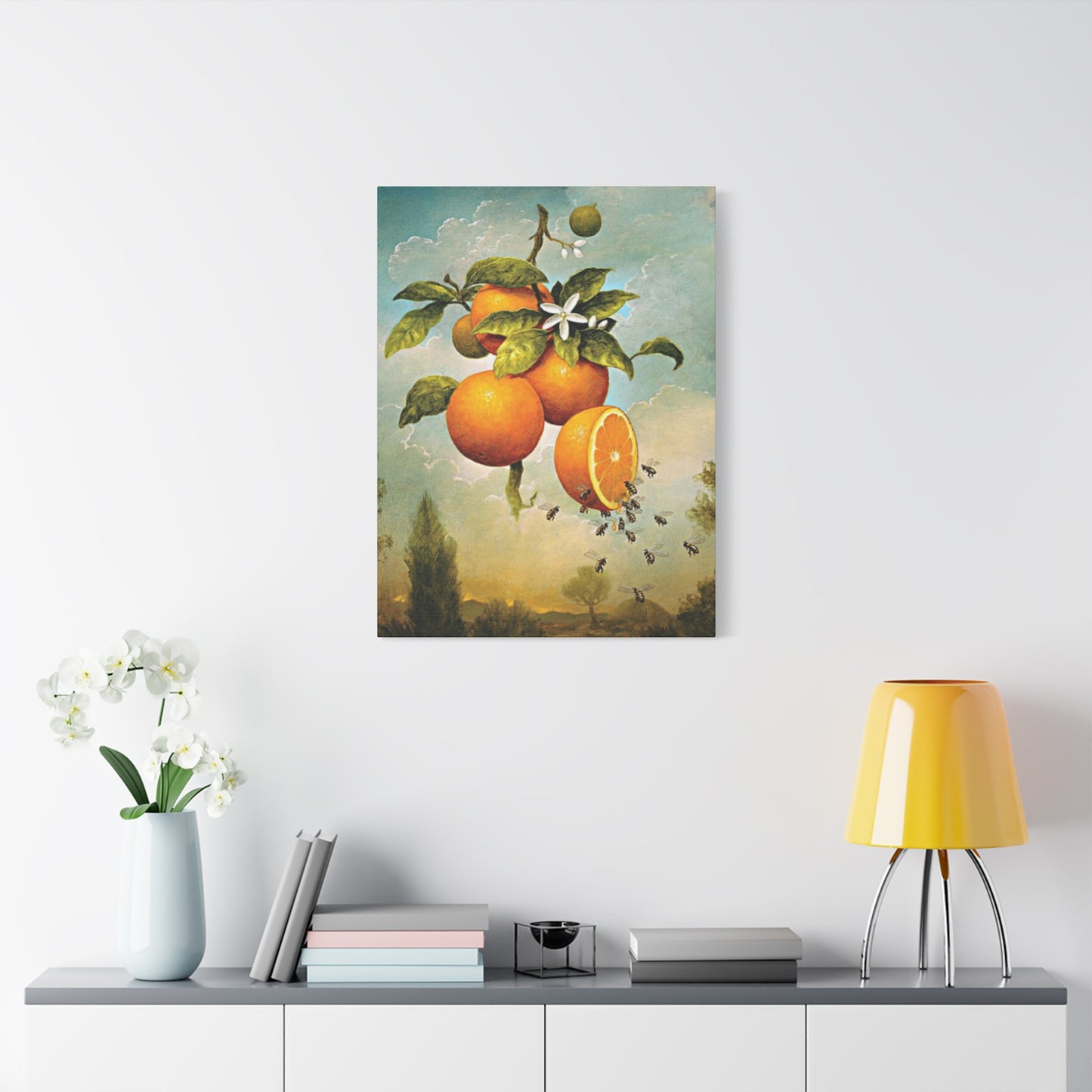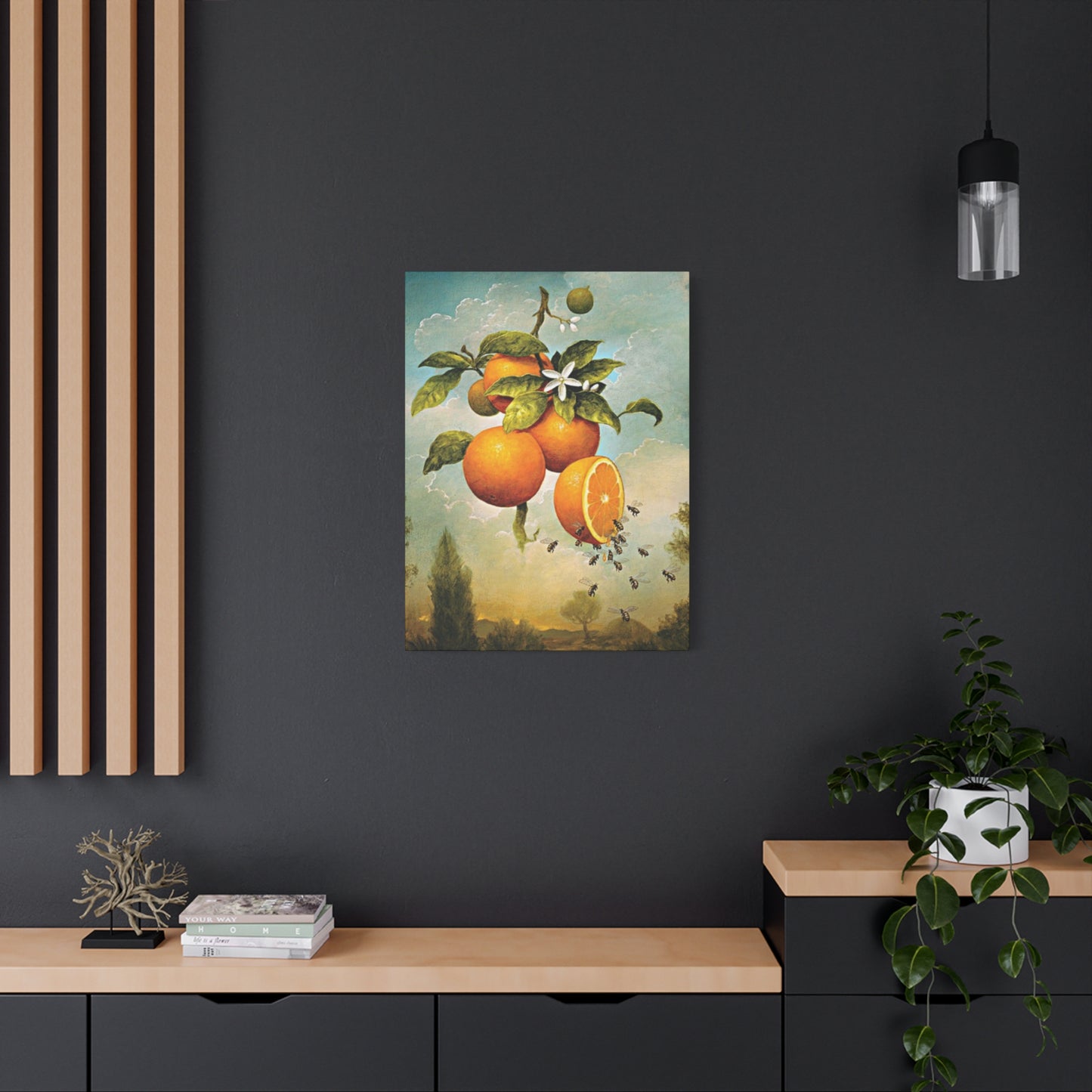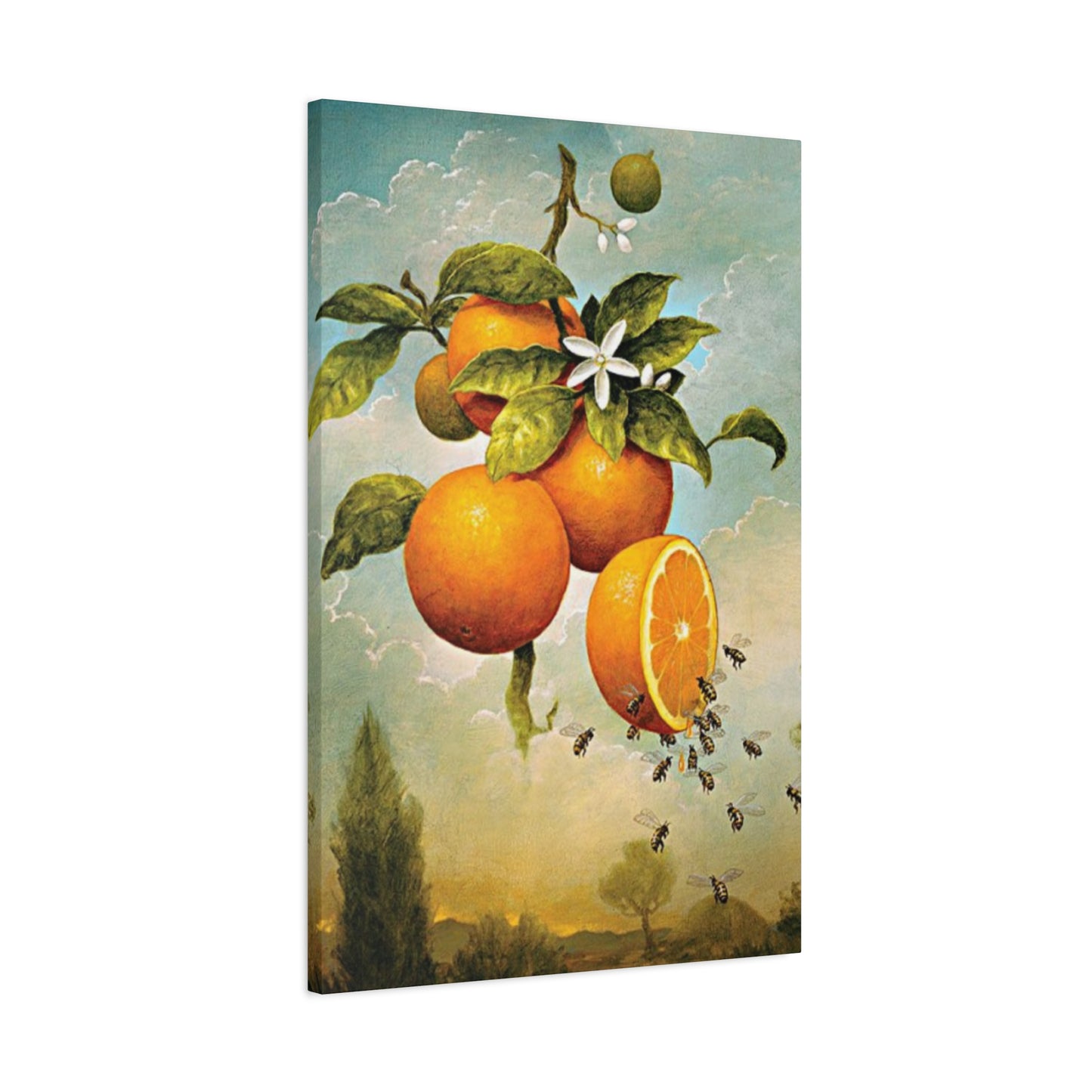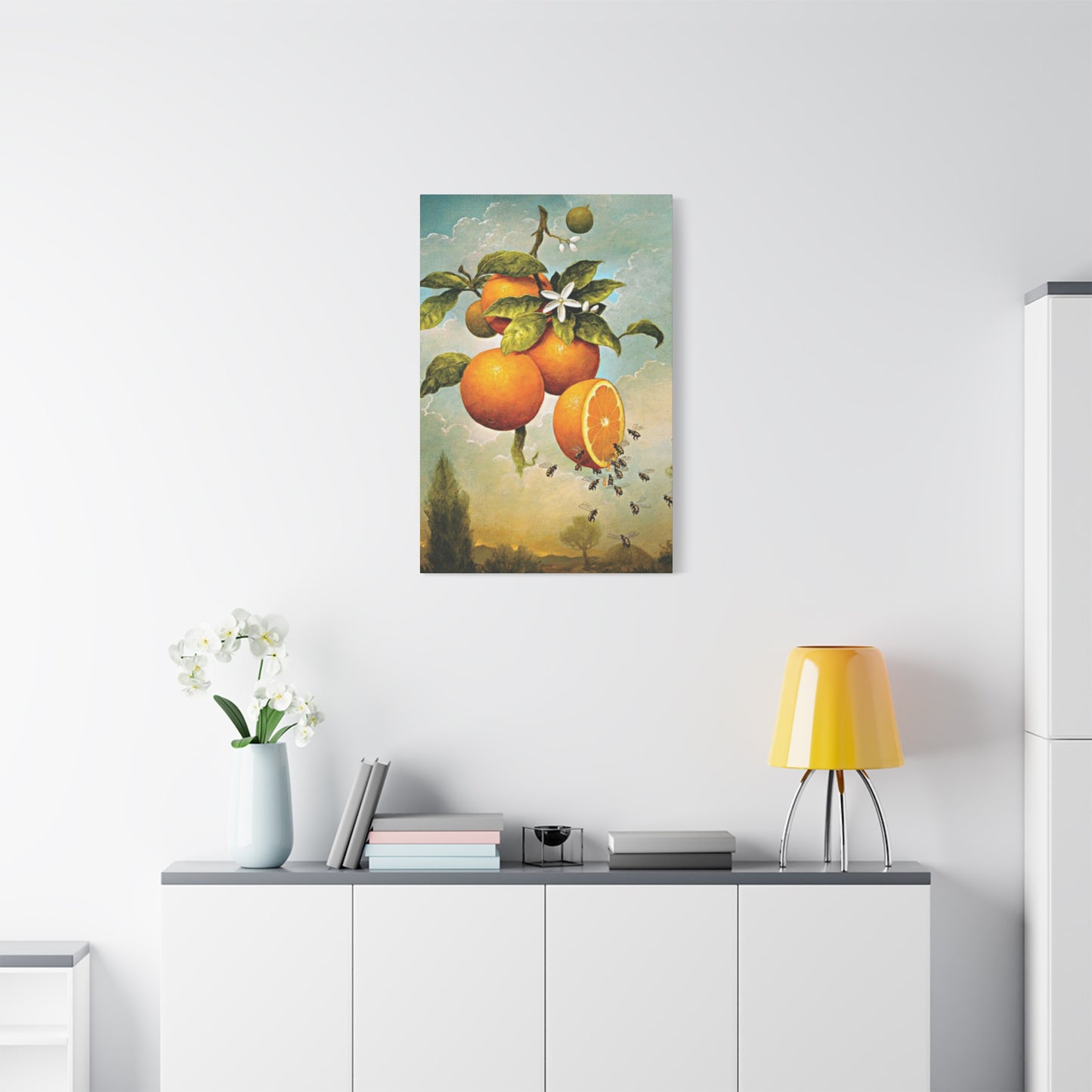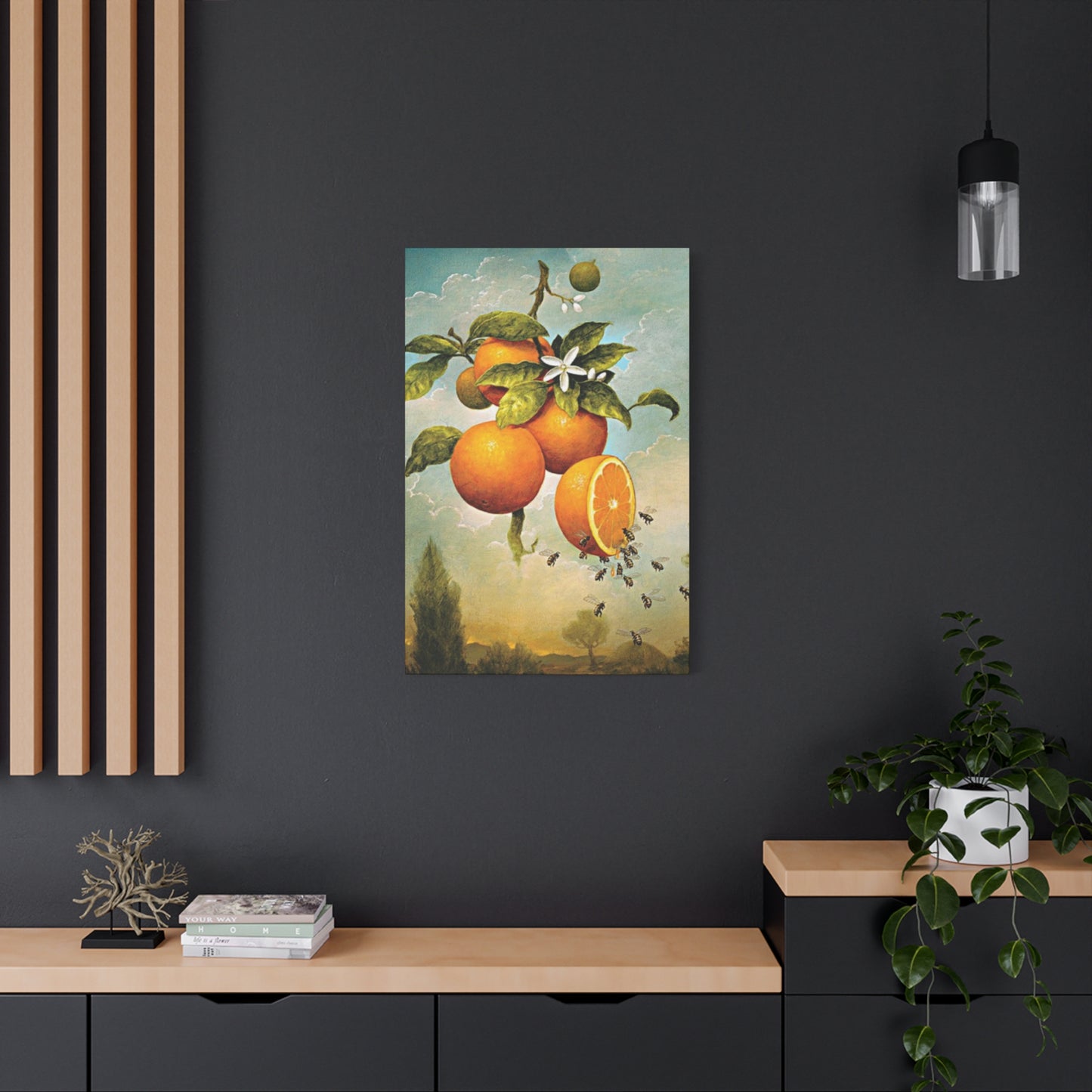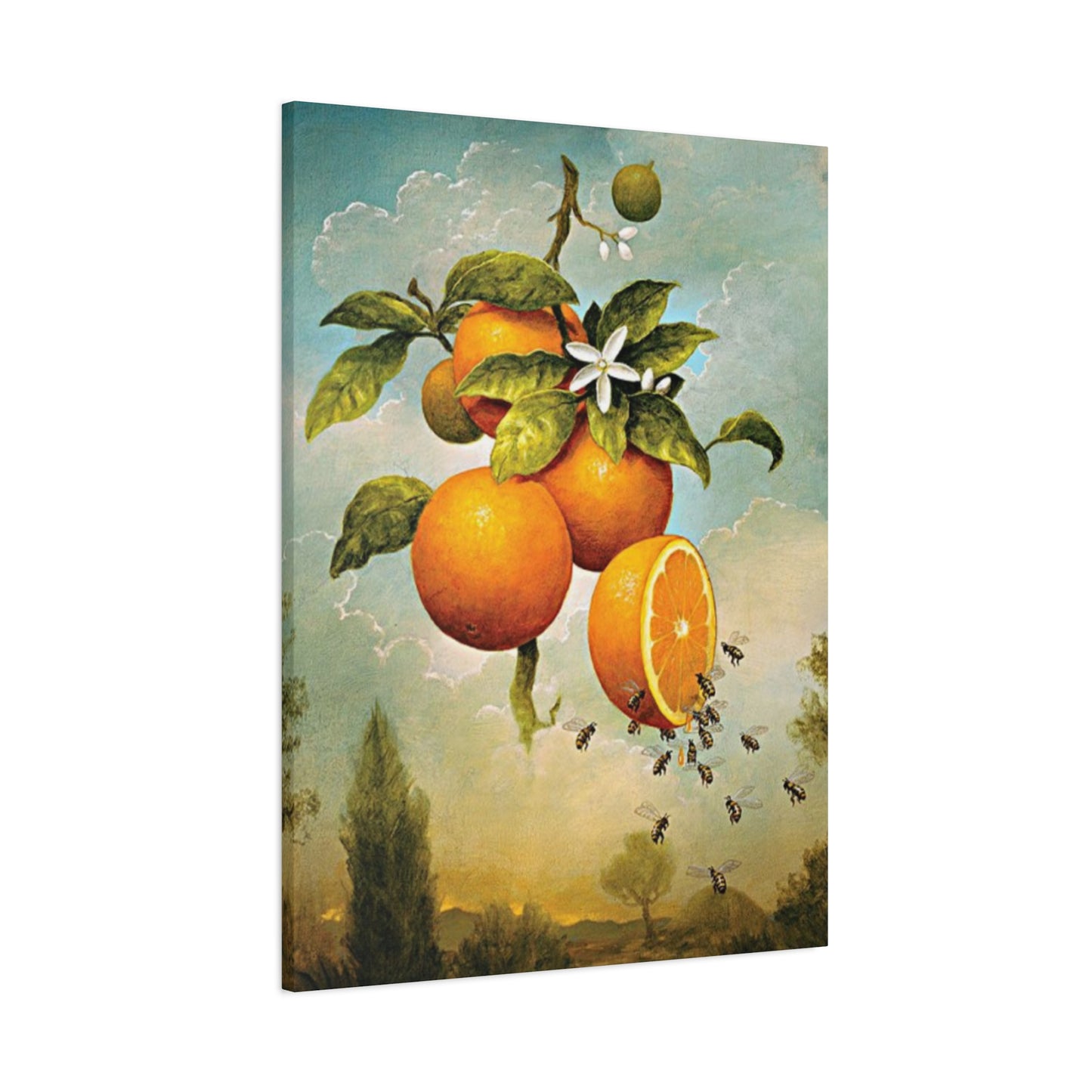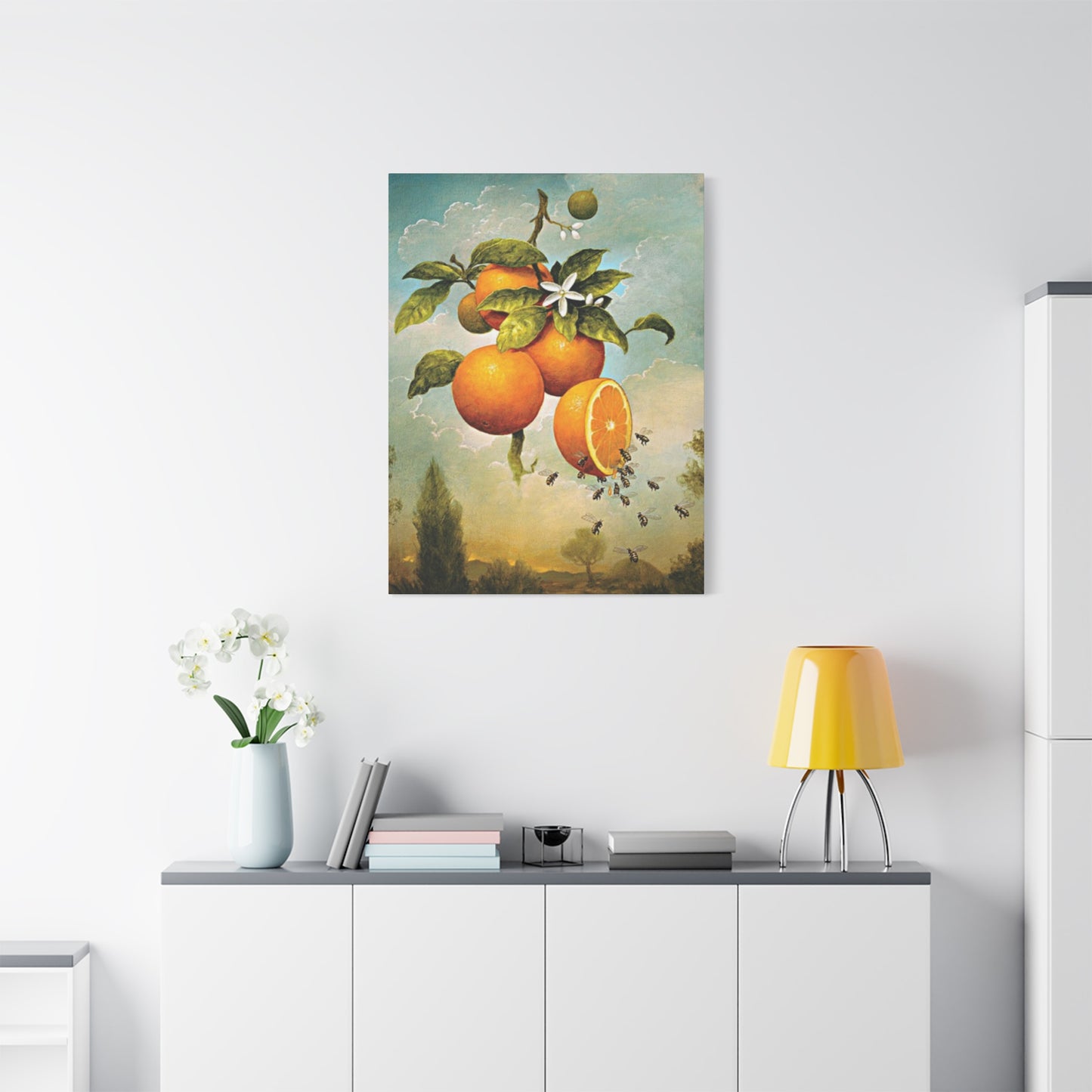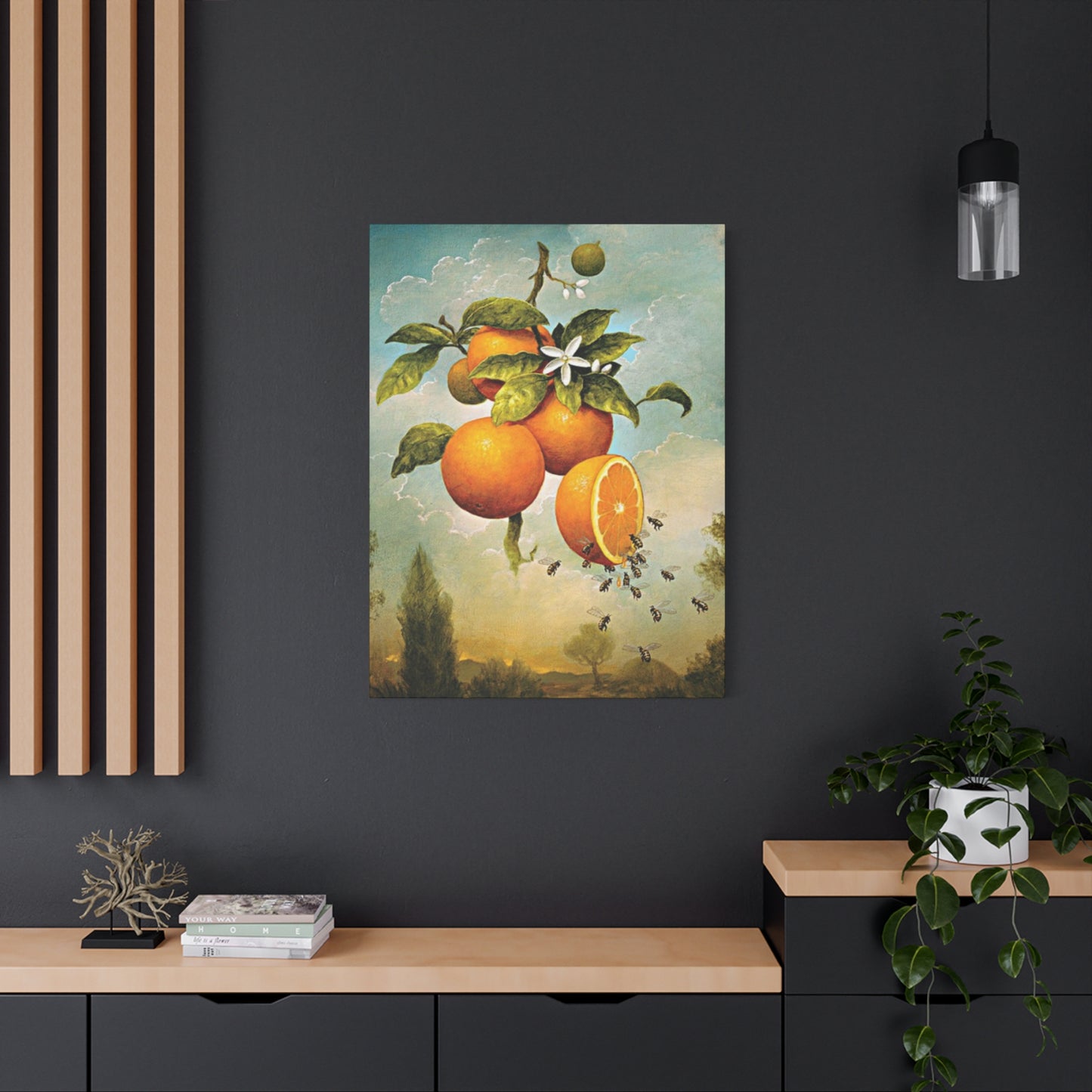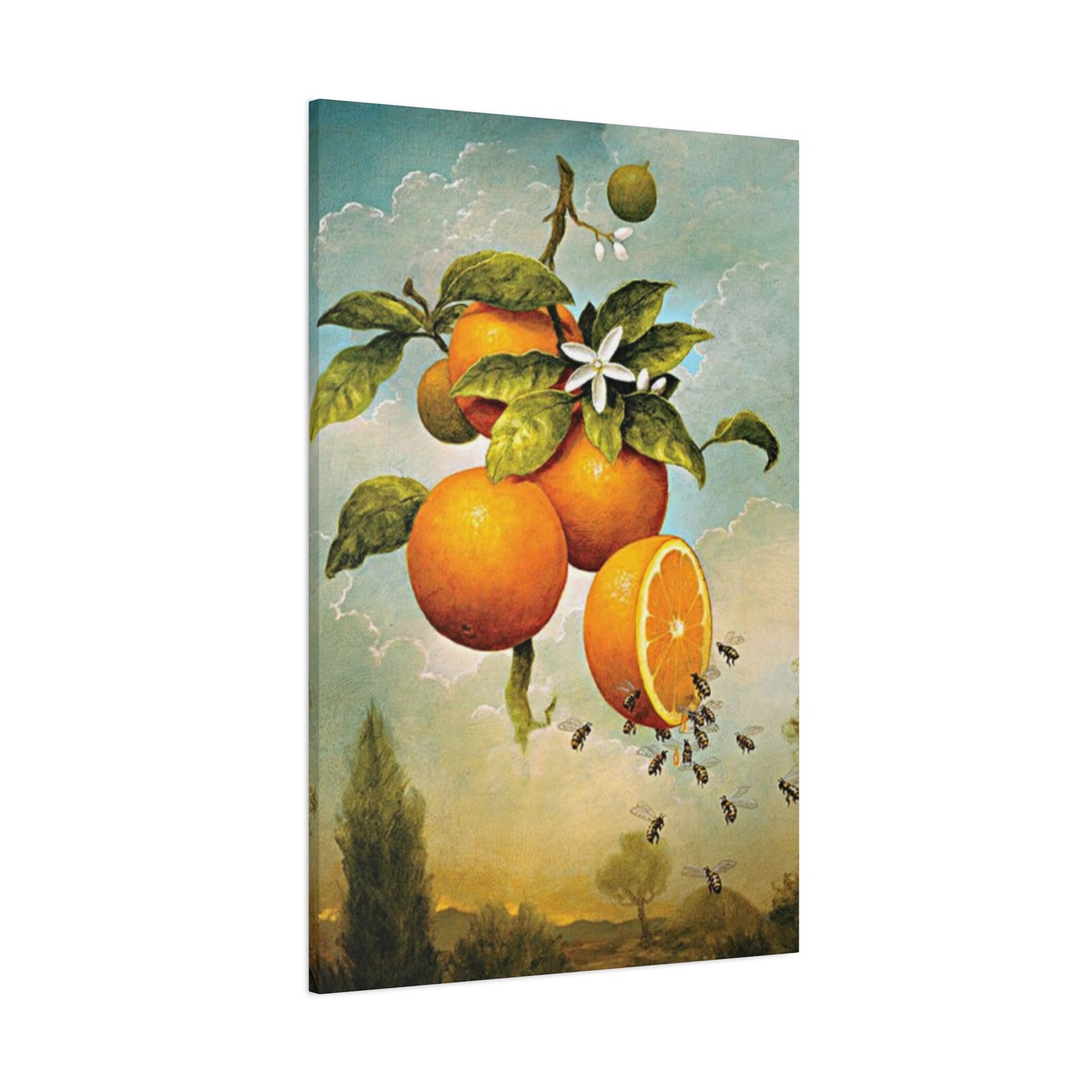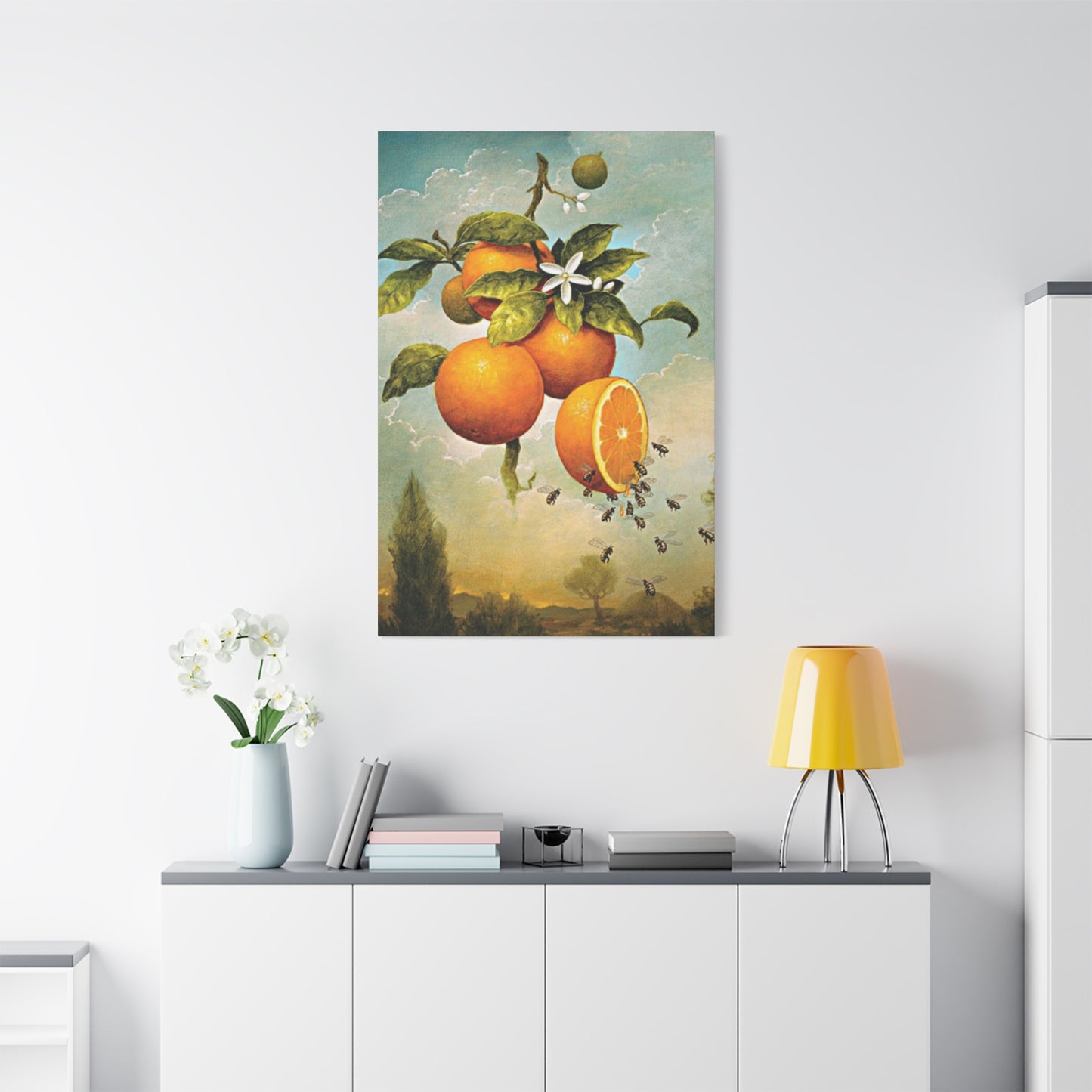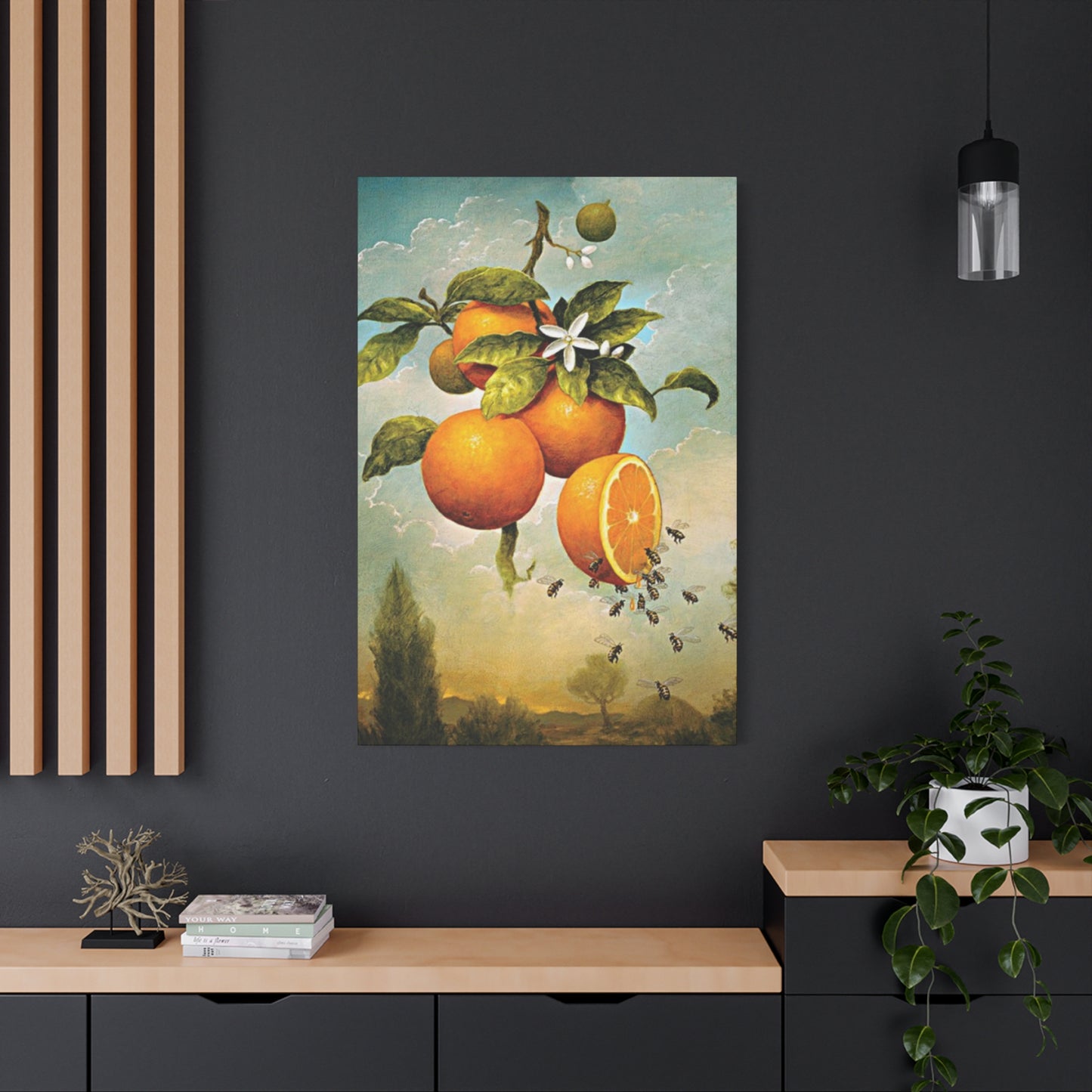Color Therapy at Home: Uplift Your Spirit with Orange Fruit Wall art Décor
Orange fruit artwork has emerged as one of the most refreshing and versatile design elements in contemporary interior decoration. The vibrant hues and organic shapes of oranges bring an instant burst of energy and warmth to any living space. Whether you're drawn to the bold citrus tones or the subtle elegance of fruit-themed aesthetics, incorporating orange imagery into your walls offers endless possibilities for creating inviting and cheerful environments. This comprehensive exploration delves into the multifaceted world of citrus-inspired wall decoration, examining how different styles, applications, and design approaches can transform ordinary rooms into extraordinary spaces filled with character and visual appeal.
The appeal of orange fruit imagery extends far beyond simple decoration. These pieces serve as conversation starters, mood enhancers, and artistic statements that reflect both personal taste and design sensibility. From traditional watercolor paintings to contemporary digital prints, the range of available options ensures that every homeowner can find the perfect piece to complement their existing decor while adding that special touch of brightness and personality. The following sections provide detailed insights into various approaches to incorporating orange fruit artwork, offering practical advice, creative inspiration, and expert guidance for making informed decisions about your wall decoration choices.
Refreshing Your Walls with Orange Fruit Art
Transforming your walls with orange fruit artwork represents one of the most effective strategies for injecting vitality and freshness into your living spaces. The process begins with understanding how these vibrant pieces can complement your existing color palette while adding layers of visual interest. Orange fruit art works exceptionally well in spaces that receive natural light, as the citrus hues interact beautifully with sunlight to create dynamic visual effects throughout the day. Consider the size and scale of your chosen artwork in relation to the wall space available, ensuring that the piece neither overwhelms the room nor gets lost among other decorative elements.
When selecting orange fruit artwork to freshen up your walls, think about the emotional atmosphere you wish to create. These pieces naturally evoke feelings of warmth, energy, and optimism, making them ideal for spaces where you want to promote positive interactions and elevated moods. The strategic placement of orange fruit art can draw the eye to specific areas of a room, creating focal points that anchor your overall design scheme. Consider grouping multiple smaller pieces together to form a gallery wall effect, or opt for a single large statement piece that commands attention and serves as the centerpiece of your decorating efforts.
The versatility of orange fruit artwork allows it to transition seamlessly between seasons while maintaining its relevance and appeal. During warmer months, these pieces echo the bright, sunny disposition of summer days, while in cooler seasons, they provide a welcome reminder of warmth and vitality. The key to successfully refreshing your walls lies in choosing pieces that resonate with your personal aesthetic while offering enough visual impact to make a meaningful difference in your space. Pay attention to the framing options available, as the right frame can elevate a simple print into a sophisticated artistic statement that enhances your entire room.
Citrus-Inspired Wall Decoration for Cooking Spaces
Cooking spaces benefit tremendously from citrus-inspired wall decoration, as these areas naturally align with themes of freshness, nourishment, and culinary creativity. Orange fruit artwork in these settings serves both aesthetic and functional purposes, creating an environment that feels welcoming and inspiring for meal preparation and gathering. The bright, cheerful nature of citrus imagery can energize morning routines while providing a pleasant backdrop for evening meal preparation. Consider how the colors in your orange fruit art coordinate with existing elements such as cabinetry, countertops, and appliances to create a cohesive design narrative.
The practical considerations of displaying artwork in cooking areas include choosing pieces that can withstand the unique environmental conditions of these spaces. Look for prints protected by glass or sealed canvas pieces that resist moisture and temperature fluctuations common in areas where cooking occurs. Position your orange fruit artwork away from direct heat sources and areas prone to splashing, while still maintaining visibility from primary work zones and dining areas. The goal is to create visual interest without compromising the practical functionality of your cooking space.
Citrus-themed decoration in cooking areas can extend beyond traditional wall art to include coordinating elements such as textiles, dishware, and decorative accessories that reinforce the theme. Creating this sense of continuity helps establish a unified design concept that feels intentional and well-executed. Consider how the scale of your orange fruit artwork relates to the size of your cooking space, ensuring that larger pieces suit spacious areas while smaller prints work better in compact settings. The right combination of placement, scale, and style can transform an ordinary cooking area into a vibrant hub of home activity that reflects your personality and design preferences.
Vibrant Space Creation with Juicy Orange Prints
Creating vibrant spaces through juicy orange prints involves understanding how color psychology influences our perception and experience of interior environments. The bold, saturated hues found in high-quality orange fruit prints can dramatically alter the energy level of a room, making spaces feel more alive and engaging. These prints work particularly well in areas where you want to encourage social interaction, creative thinking, or physical activity, as the stimulating nature of orange tones naturally promotes these types of engagement. Consider the intensity of color in your chosen prints, balancing bold statements with the overall mood you wish to establish.
The selection of juicy orange prints requires attention to both artistic merit and technical quality. Look for prints that capture the luscious, appetizing nature of fresh oranges with clarity and depth, ensuring that colors remain true and vibrant over time. High-quality printing techniques and archival materials ensure that your investment maintains its visual impact for years to come. Consider the composition of each print, looking for arrangements that create visual interest through variation in size, position, and perspective of the oranges depicted. Dynamic compositions keep the eye moving across the image, preventing the artwork from becoming static or boring.
Incorporating juicy orange prints into your decor strategy requires thinking about lighting conditions and viewing angles. These prints benefit from adequate lighting that brings out the richness of their colors without creating glare or washing out details. Experiment with different placement options before making final decisions, living with temporary arrangements to see how the artwork interacts with your space throughout different times of day. The goal is to find positions where the prints receive optimal viewing exposure while contributing positively to the overall flow and function of the room. Remember that vibrant artwork like this serves as an energizing element that should enhance rather than dominate your living environment.
Retro Orange Fruit Posters for Fun Atmosphere
Retro orange fruit posters bring a distinctive playfulness and nostalgic charm to interior spaces, evoking memories of vintage advertising and mid-century design aesthetics. These pieces often feature bold graphics, simplified shapes, and limited color palettes that reflect the design sensibilities of earlier decades. Incorporating retro posters into contemporary spaces creates an interesting juxtaposition that adds depth and character to your decor. The fun atmosphere generated by these pieces stems from their ability to transport viewers to different eras while maintaining relevance in modern contexts through their timeless visual appeal.
The search for authentic retro orange fruit posters can take you through vintage shops, online marketplaces, and reproduction sources that specialize in historical design. When selecting pieces, consider whether you prefer genuine vintage items with their inherent patina and imperfections, or high-quality reproductions that capture the aesthetic without the fragility of aged materials. Each approach offers distinct advantages, with vintage pieces providing authentic historical connection and reproductions offering durability and consistent quality. The decision ultimately depends on your collecting philosophy and practical considerations regarding preservation and display.
Styling retro orange fruit posters requires understanding how to balance their bold, graphic nature with surrounding decor elements. These pieces often work best when given some breathing room, allowing their distinctive visual language to shine without competing with overly busy backgrounds or conflicting patterns. Consider creating dedicated display areas that celebrate the retro aesthetic through coordinating furniture, accessories, and color choices. The fun vibe associated with retro posters can be amplified through thoughtful curation that tells a cohesive design story, whether you're recreating a specific era or creating an eclectic mix that celebrates various historical periods.
Watercolor Orange Fruit Wall Art Concepts
Watercolor orange fruit wall art represents a softer, more organic approach to citrus-themed decoration, offering gentle color transitions and artistic interpretations that feel personal and handcrafted. The inherent fluidity of watercolor techniques creates images that seem to glow with inner light, as translucent layers of pigment build up to form rich, complex hues. These pieces bring an artistic sensibility to spaces, suggesting refinement and appreciation for traditional art forms while maintaining the fresh, natural appeal of fruit imagery. The loose, expressive quality of watercolor painting allows for interpretations that range from highly realistic to beautifully abstract.
Selecting watercolor orange fruit art involves considering both the technical skill of the artist and the emotional resonance of the piece. Look for works that demonstrate mastery of the watercolor medium, with controlled wet-into-wet effects, strategic use of white space, and harmonious color relationships that enhance rather than muddy the image. The best watercolor pieces maintain a sense of spontaneity and freshness that captures the essential character of oranges without becoming overworked or tight. Consider how the color temperature of the watercolors coordinates with your existing palette, noting whether the oranges lean toward warm, golden tones or cooler, more vermillion hues.
Displaying watercolor orange fruit art requires attention to preservation concerns, as these works can be more vulnerable to environmental factors than other types of prints or paintings. Ensure proper framing with UV-protective glazing that shields the artwork from harmful light exposure while allowing colors to remain vibrant and true. Consider matting options that create visual breathing room around the image, enhancing its delicate nature and drawing attention to the subtle nuances of the watercolor technique. The placement of watercolor art should favor locations with stable environmental conditions, avoiding areas with direct sunlight, high humidity, or dramatic temperature fluctuations that could damage the delicate medium over time.
Orange Slices in Contemporary Art Prints
Contemporary art prints featuring orange slices represent a modern interpretation of fruit imagery, often employing clean lines, bold compositions, and innovative perspectives that challenge traditional still life conventions. These pieces might present orange slices in unexpected contexts, use unusual color combinations, or employ graphic design elements that transform familiar fruit into striking visual statements. The appeal of contemporary orange slice prints lies in their ability to feel both fresh and sophisticated, bridging the gap between accessible subject matter and artistic innovation. These works often resonate with design-conscious individuals who appreciate art that makes bold statements without sacrificing aesthetic refinement.
The creation and selection of contemporary orange slice prints involves understanding current trends in graphic design and fine art photography. Many contemporary pieces employ digital techniques that allow for precise control over composition, color saturation, and visual effects, resulting in images with crystal clarity and impact. Some artists approach orange slices through macro photography, revealing intricate details and textures invisible to the naked eye, while others use oranges as jumping-off points for abstract explorations of color and form. The diversity within contemporary approaches ensures that collectors can find pieces that align with their specific aesthetic preferences and design goals.
Incorporating contemporary orange slice prints into interior spaces requires considering how these pieces interact with modern design principles such as minimalism, clean lines, and edited color palettes. These prints often work best in spaces that embrace contemporary aesthetics, where their bold, graphic nature complements rather than conflicts with surrounding elements. Consider the scale of contemporary prints carefully, as many are designed to make strong statements through size and visual impact. The right contemporary orange slice print can serve as the focal point of an entire room, anchoring the design scheme and setting the tone for all other decorative decisions. Balance is key, ensuring that the boldness of the artwork energizes the space without overwhelming its inhabitants.
Framed Orange Fruit Art for Farmhouse Cooking Spaces
Framed orange fruit art brings a perfect blend of rustic charm and natural beauty to farmhouse cooking spaces, complementing the warm, inviting aesthetic that defines this popular design style. The combination of citrus imagery with farmhouse decor creates connections to agricultural traditions, harvest celebrations, and the simple pleasure of fresh, wholesome ingredients. When selecting framed orange fruit art for farmhouse settings, consider pieces that emphasize the natural, organic qualities of the fruit rather than overly stylized or abstract interpretations. The framing choices become crucial in these contexts, with distressed wood, simple black frames, or whitewashed finishes often working best to maintain the unpretentious, authentic feel characteristic of farmhouse design.
The arrangement of framed orange fruit art in farmhouse cooking spaces benefits from asymmetrical groupings and varied frame sizes that create visual interest without appearing too formal or rigid. This approach reflects the collected-over-time aesthetic that farmhouse style celebrates, suggesting that pieces have been gathered gradually rather than purchased as matching sets. Consider mixing orange fruit art with other nature-inspired images, vintage utensils, or text-based prints featuring recipes or food-related quotes to create gallery walls that tell rich, layered stories. The key is maintaining cohesion through consistent framing styles, color palettes, or subject matter while allowing enough variation to keep arrangements feeling dynamic and engaging.
Vintage Orange Crate Label Wall Art
Vintage orange crate label wall art celebrates a fascinating chapter in commercial design history, when fruit shipping companies competed for attention through beautifully illustrated paper labels affixed to wooden crates. These labels often featured idealized landscapes, cheerful characters, and bold typography that communicated brand identity and product quality before modern marketing techniques existed. Incorporating vintage orange crate labels into contemporary interiors creates connections to agricultural heritage, regional history, and the evolution of graphic design. The nostalgia associated with these pieces appeals to collectors and design enthusiasts who appreciate the craftsmanship and creativity of earlier eras.
The hunt for authentic vintage orange crate labels or high-quality reproductions can lead to antique shops, online auction sites, and specialty retailers focused on agricultural memorabilia. When evaluating potential pieces, consider the condition, rarity, and visual appeal of different labels, recognizing that genuine vintage items may show signs of age that actually enhance their authentic character. Reproductions offer the advantage of consistent quality and availability while capturing the aesthetic charm of originals. The decision between authentic and reproduction pieces depends on personal collecting goals, budget considerations, and practical concerns about preservation and display.
Styling vintage orange crate label wall art requires understanding how to showcase these pieces in ways that honor their historical significance while maintaining relevance in contemporary spaces. Consider creating dedicated display areas that group multiple labels together, perhaps organized by region, time period, or design style to tell cohesive visual stories. The framing of crate labels deserves careful consideration, with options ranging from simple frames that let the labels speak for themselves to more elaborate presentations that treat them as important historical artifacts. These pieces work particularly well in casual spaces, home offices, or any area where conversation-starting artwork adds character and personality. The vibrant colors and bold graphics of vintage crate labels bring immediate visual impact while connecting present-day homes to the rich history of agricultural commerce and regional identity.
Bright Orange Wall Art for Cheerful Interiors
Bright orange wall art serves as an instant mood elevator in interior spaces, flooding rooms with the energizing warmth and optimism associated with this vibrant color family. The psychological impact of bright orange cannot be overstated, as this hue naturally attracts attention, stimulates conversation, and promotes feelings of enthusiasm and creativity. When incorporating bright orange wall art into your home, consider the overall effect you wish to achieve, recognizing that these bold pieces naturally become focal points that anchor entire design schemes. The key to success lies in balancing the intensity of bright orange artwork with complementary colors and neutral elements that prevent the space from feeling overwhelming.
The selection of bright orange wall art should take into account the existing color palette and natural lighting conditions of your space. Rooms with abundant natural light can handle more saturated orange tones without feeling oppressive, while spaces with limited light may benefit from artwork that incorporates brighter oranges with generous amounts of white or lighter tones to maintain an open, airy feeling. Consider the size and scale of bright orange pieces carefully, as larger artworks create more dramatic impact but also require more visual balancing through thoughtful placement and surrounding design elements. Multiple smaller pieces arranged strategically can distribute color impact throughout a space, creating rhythm and movement that guides the eye around the room.
Creating cheerful interiors through bright orange wall art extends beyond simply hanging pieces on walls to encompass holistic design thinking about how color affects mood and behavior. These vibrant pieces work particularly well in spaces dedicated to social interaction, creative activities, or physical movement, where the energizing properties of orange support the intended function. Consider pairing bright orange wall art with natural materials like wood and stone to ground the intensity of the color in organic textures, or combine it with crisp whites and cool grays for a more contemporary, high-contrast look. The versatility of bright orange allows it to work across various design styles, from bohemian eclecticism to modern minimalism, provided the implementation respects the overall aesthetic direction of your home.
Abstract Orange Fruit Patterns for Bold Decoration
Abstract orange fruit patterns push beyond literal representation to explore color, form, and composition in ways that challenge traditional still life conventions. These bold decorative pieces might deconstruct oranges into geometric shapes, explore rhythmic repetitions of fruit forms, or use citrus imagery as inspiration for purely abstract color explorations. The appeal of abstract orange fruit patterns lies in their ability to reference the natural world while offering artistic interpretation that invites contemplation and diverse readings. These pieces resonate with individuals who appreciate art that engages both intellectually and emotionally, providing visual interest that reveals new dimensions upon repeated viewing.
Creating or selecting abstract orange fruit patterns requires openness to non-literal interpretations and willingness to embrace ambiguity in representation. The most successful abstract pieces maintain some connection to their fruit origins while achieving independence as pure design objects. Look for works that demonstrate strong compositional structure, harmonious or intentionally discordant color relationships, and visual movement that leads the eye through the piece in engaging ways. Consider how the level of abstraction in your chosen artwork aligns with your personal aesthetic preferences and existing decor, recognizing that some abstract pieces lean toward recognizability while others venture into purely non-objective territory.
Incorporating abstract orange fruit patterns into bold decoration schemes requires confidence and commitment to artistic expression. These pieces often work best when given prominent placement and adequate space to breathe, allowing their complex visual language to unfold without competition from overly busy surroundings. Consider the relationship between abstract orange patterns and other design elements in the room, looking for opportunities to echo colors, shapes, or compositional strategies throughout the space to create design cohesion. The bold nature of abstract patterns makes them ideal for creating statement walls or anchoring conversation areas where their visual complexity can spark discussion and add depth to the environment. Balance remains important, ensuring that the boldness of abstract orange fruit patterns energizes rather than exhausts the inhabitants of the space.
Botanical Orange Fruit Prints for Natural Charm
Botanical orange fruit prints bring scientific precision and natural beauty together in artwork that celebrates the intricate details and structural elegance of citrus plants. These prints typically feature oranges in various stages of development, from blossoms to mature fruit, often including cross-sections that reveal internal anatomy and leaves that showcase the complete plant. The botanical approach to orange fruit art connects to long traditions of scientific illustration while offering aesthetic appeal that works beautifully in contemporary interiors. The natural charm of botanical prints stems from their ability to educate and delight simultaneously, combining accurate observation with artistic sensitivity.
The history of botanical illustration provides rich context for understanding and appreciating contemporary botanical orange fruit prints. Dating back centuries to when illustrated guides were essential for identifying and cataloging plant species, botanical art developed distinctive conventions regarding composition, detail level, and presentation. Modern botanical prints may adhere strictly to these traditional approaches or take creative liberties that maintain botanical accuracy while introducing contemporary design elements. When selecting botanical orange prints, consider whether you prefer historically accurate reproductions, contemporary interpretations of botanical traditions, or hybrid approaches that blend scientific precision with artistic innovation.
Displaying botanical orange fruit prints requires attention to framing and arrangement strategies that honor their scientific heritage while maximizing decorative impact. Traditional matting techniques that create generous borders around botanical illustrations help focus attention on the detailed artwork while providing visual rest for the eye. Consider creating series arrangements that show different aspects of orange development or various citrus species, building educational narratives through thoughtful curation. Botanical prints work exceptionally well in spaces dedicated to reading, study, or contemplation, where their detailed nature rewards close inspection. The natural charm these pieces bring to interiors stems from their connection to the living world and their reminder of the incredible complexity and beauty present in everyday plants that we might otherwise take for granted.
Orange-Inspired Wall Art for Dining Rooms
Orange-inspired wall art elevates dining rooms from purely functional spaces into environments that stimulate appetite and encourage convivial gathering. The warm, appetizing nature of orange hues makes them particularly appropriate for areas dedicated to meals and social interaction around food. When selecting wall art for dining rooms, consider how orange tones complement existing color schemes while adding visual warmth that makes the space feel more inviting. The psychological association between orange colors and food, sunshine, and social energy creates an atmosphere conducive to the leisurely enjoyment of meals and the company of family and friends.
The placement of orange-inspired wall art in dining rooms requires considering sightlines from various seating positions and how the artwork interacts with other key elements like lighting fixtures, serving furniture, and table settings. Artwork positioned at eye level for seated diners creates the most engagement, allowing guests to enjoy the pieces throughout their meal. Consider how the colors in your chosen artwork coordinate with table linens, dishware, and other dining accessories to create cohesive design narratives that feel intentional and polished. The scale of dining room art should be proportionate to the size of the space and dining table, with larger rooms supporting more substantial pieces and intimate spaces working better with smaller, more delicate artwork.
Creating memorable dining experiences involves more than just food, extending to the entire sensory environment in which meals occur. Orange-inspired wall art contributes to this holistic approach by providing visual stimulation that enhances the dining experience. Consider how lighting affects the appearance of your orange artwork, with dimmers allowing you to adjust the intensity and mood of the space from bright daytime meals to intimate evening dinners. The versatility of orange-themed art allows it to work across various dining room styles, from formal traditional spaces to casual contemporary areas. The key is selecting pieces that resonate with your personal aesthetic while supporting the functional and emotional goals you have for your dining room as a gathering space.
Playful Citrus Art for Children's Rooms
Playful citrus art brings whimsy, color, and imagination to children's rooms, creating environments that stimulate creativity while maintaining the freshness and vitality associated with fruit imagery. These pieces often feature anthropomorphized oranges with cheerful faces, citrus fruits engaged in adventures, or abstract patterns derived from fruit shapes and colors. The playful nature of these artworks aligns perfectly with the sense of wonder and possibility that characterizes childhood, making bedrooms and play spaces feel more joyful and personalized. When selecting citrus art for children's rooms, consider pieces that will grow with the child, offering enough sophistication to remain relevant as tastes mature.
The design considerations for children's room art differ somewhat from adult spaces, with emphasis on durability, safety, and age-appropriateness. Look for securely framed pieces or canvas prints that won't pose hazards if dislodged, and ensure that all hanging hardware is properly installed and rated for the weight of the artwork. The content of playful citrus art should align with the child's interests and developmental stage, offering appropriate levels of complexity and subject matter. Consider involving children in the selection process when age-appropriate, allowing them to exercise preference and develop their own aesthetic sensibilities while maintaining parental guidance regarding quality and safety.
Creating cohesive design narratives in children's rooms using playful citrus art can extend to coordinating bedding, curtains, rugs, and other decorative elements that reinforce the fruit theme without overwhelming the space. The goal is creating environments that feel purposeful and considered rather than chaotically decorated. Playful citrus art works particularly well when balanced with neutral background colors that allow the vibrant fruit imagery to pop without creating visual chaos. As children grow, the ability to easily update wall art allows for evolving the space to reflect changing interests and maturity levels. The lasting appeal of fruit themes stems from their universal recognition and positive associations, making citrus art a relatively safe choice that offers longevity compared to character-based or trend-driven alternatives.
Realistic Orange Fruit Photography for Walls
Realistic orange fruit photography brings the crisp clarity and immediate impact of photographic images to wall decoration, offering precise representation that captures every detail and nuance of fresh citrus. These pieces showcase the technical skill of photographers who understand lighting, composition, and color management to create images that feel both true to life and artistically compelling. The appeal of photographic orange art lies in its ability to bridge the gap between documentation and artistic expression, creating images that honor the inherent beauty of fruit while demonstrating the photographer's creative vision. High-quality fruit photography can make viewers feel as though they could reach out and touch the oranges, so tangible and present do they appear.
The technical aspects of selecting realistic orange fruit photography include evaluating print quality, color accuracy, and resolution to ensure images maintain their clarity and impact at the intended display size. Professional fruit photography requires specialized knowledge of lighting techniques that highlight texture, manage reflections, and create depth through careful control of shadows and highlights. When examining photographic prints, look for sharp focus throughout the image, natural color that captures the true appearance of ripe oranges, and printing quality that preserves fine details and subtle tonal gradations. The substrate or material on which the photograph is printed affects both appearance and longevity, with options ranging from traditional photo paper to canvas, metal, or acrylic that offer different aesthetic qualities and durability characteristics.
Displaying realistic orange fruit photography requires consideration of how photographic images interact with viewing distance and lighting conditions. These pieces often benefit from lighting that doesn't create glare on the print surface while providing adequate illumination to appreciate the photographic detail. Consider the relationship between the photographic style and your existing decor, recognizing that realistic fruit photography can work across various design aesthetics from traditional to contemporary depending on framing choices and composition style. The immediacy and accessibility of photographic imagery makes these pieces particularly effective in spaces where you want to create instant visual impact without requiring interpretation or artistic knowledge to appreciate. The universal appeal of beautifully photographed fresh fruit makes realistic orange photography a crowd-pleasing choice that resonates with diverse audiences.
Sunny Orange Fruit Prints for Summer Decoration
Sunny orange fruit prints capture the essence of summer with their bright, cheerful depictions of citrus that evoke warm weather, outdoor gatherings, and the carefree spirit of the season. These prints work beautifully as seasonal decoration that can be rotated with other artwork throughout the year, or as permanent fixtures that bring eternal summer sunshine to interior spaces. The association between oranges and summer stems from the fruit's bright color, refreshing flavor, and the outdoor settings where citrus fruits are often enjoyed. Incorporating sunny orange prints into summer decoration strategies creates cohesive seasonal design narratives that celebrate the unique character and mood of warmer months.
The selection of orange prints specifically for summer decoration might emphasize certain stylistic elements that reinforce seasonal themes. Look for pieces that incorporate additional summer references like beach scenes, picnic settings, or outdoor markets where citrus might naturally appear. The color palette surrounding the oranges can reinforce summer associations through the inclusion of ocean blues, sandy beiges, or garden greens that complement the fruit tones. Consider prints that capture the particular quality of summer light, with bright highlights and warm shadows that evoke specific times of day or outdoor conditions. The overall mood of summer-appropriate orange prints should feel light, optimistic, and energizing.
Implementing sunny orange fruit prints as part of broader summer decoration requires thinking about how various design elements work together to create seasonal atmosphere. These prints can anchor summer decorating schemes that include fresh flowers, light textiles, and outdoor-inspired accessories that transform interiors into summer retreats. Consider creating gallery walls that combine orange prints with other summer themes like shells, sailboats, or tropical plants to tell richer seasonal stories. The advantage of focusing some orange fruit art specifically on summer decoration is the ability to refresh your space seasonally, preventing design fatigue while marking the passage of time through evolving aesthetic choices. Even in year-round display, sunny orange prints maintain their appeal by serving as reminders of summer pleasures during darker, colder months.
Pairing Orange Fruit Art with Greenery
Pairing orange fruit art with greenery creates natural color harmonies that reference the way citrus fruits appear in nature, attached to verdant trees and surrounded by lush foliage. This combination leverages complementary color theory, as orange and green sit opposite each other on the color wheel, creating visual vibrancy when placed in proximity. The addition of living or artificial plants near orange fruit artwork enhances the organic, natural feeling of spaces while providing textural contrast between the flat surface of art and the dimensional quality of plants. This pairing strategy works across various design styles, from tropical-inspired spaces to clean contemporary rooms where natural elements provide essential warmth and life.
The practical implementation of pairing orange fruit art with greenery requires consideration of scale, proportion, and placement to achieve balanced compositions. Large statement plants positioned near orange fruit artwork create dramatic vignettes that draw the eye and anchor spaces, while smaller plants arranged on shelves or tables can create layered displays that incorporate artwork as one element among several. Consider the specific shades of green in your plant selections, recognizing that cool blue-greens create different effects when paired with orange than warm yellow-greens. The goal is creating harmonious relationships where plants and artwork enhance each other without competing for attention or creating visual confusion.
The botanical connection between oranges and greenery can be reinforced through artwork selection that includes foliage elements, whether through botanical prints that show complete orange tree branches or through compositions that incorporate leaves as design elements. This approach creates stronger conceptual links between the living plants and the artwork, suggesting a cohesive design narrative about nature and growth. Consider how different types of plants pair with various styles of orange fruit art, with structured plants like snake plants or fiddle leaf figs complementing modern, graphic orange prints, while trailing pothos or flowing ferns work beautifully with softer, watercolor-style citrus art. The combination of orange artwork and greenery brings essential life force to interiors, creating spaces that feel vibrant, healthy, and connected to the natural world.
Pop Art Orange Fruit Pieces for Contemporary Homes
Pop art orange fruit pieces bring the bold graphics, vibrant colors, and cultural commentary characteristic of this influential art movement into contemporary home environments. Drawing inspiration from mid-century artists who elevated everyday objects to artistic subjects, modern pop art interpretations of oranges often feature high-contrast colors, repetitive patterns, and graphic simplifications that transform familiar fruit into striking visual statements. These pieces appeal to design-conscious individuals who appreciate art that engages with popular culture while maintaining aesthetic sophistication. The playful irreverence of pop art approaches makes orange fruit pieces particularly suitable for contemporary homes that embrace bold design choices and aren't afraid of making strong stylistic statements.
The creation and collection of pop art orange fruit pieces spans from original artworks by contemporary artists working in pop traditions to high-quality prints that reproduce iconic works or create new interpretations of pop aesthetics. When selecting pop art pieces, consider how the specific color combinations, graphic treatments, and compositional strategies align with your existing decor and personal taste. Pop art's characteristic use of commercial printing techniques, bold outlines, and saturated colors creates immediate visual impact that works particularly well in modern spaces with clean lines and uncluttered backgrounds. The ironic or humorous elements often present in pop art can add levity and personality to spaces that might otherwise feel austere or overly serious.
Incorporating pop art orange fruit pieces into contemporary homes requires embracing the movement's bold, unapologetic approach to color and composition. These pieces typically work best when given prominent placement where their graphic nature can be fully appreciated without visual competition from busy surroundings. Consider how pop art oranges might dialogue with other design elements in your home, perhaps echoing colors found in furniture upholstery or creating intentional contrasts with more subdued elements. The versatility of pop art approaches allows for incorporation across various room types, from living areas where the art sparks conversation to home offices where creative energy is valued. The key to success lies in committing to the bold aesthetic while maintaining overall design balance that prevents spaces from feeling chaotic or overwhelming.
Large Canvas Prints of Juicy Oranges
Large canvas prints of juicy oranges create immediate, commanding focal points that anchor entire rooms and set the tone for surrounding design decisions. The substantial scale of these pieces provides presence and authority that smaller artworks cannot match, making them ideal for spacious walls, over furniture groupings, or in rooms with high ceilings where proportionate artwork is necessary to maintain visual balance. The subject matter of juicy, fresh-looking oranges at large scale creates almost tangible appeal, with viewers responding to the appetizing, vibrant depiction of fruit that feels close enough to touch. These substantial pieces make bold statements about the homeowner's design confidence and willingness to embrace dramatic artistic elements.
The technical considerations for large canvas prints include ensuring adequate image resolution to maintain clarity at expanded sizes and selecting high-quality printing processes that deliver accurate colors and sharp details. Canvas as a substrate offers particular advantages for large-scale fruit prints, including its traditional association with fine art painting, its lack of reflective glare that can plague glazed prints, and its dimensional quality that adds physical presence to images. When selecting large orange canvas prints, evaluate the stretching and mounting quality, ensuring that the canvas is properly tensioned and that corners are neatly finished. Consider whether you prefer gallery-wrapped canvases where the image continues around the edges, allowing for frameless display, or traditionally stretched canvases that will be framed.
Displaying large canvas prints of juicy oranges requires strategic placement that considers viewing distances, room proportions, and surrounding design elements. These substantial pieces need adequate space to breathe, with surrounding wall area and furniture arrangement that doesn't crowd or diminish their impact. Consider the relationship between the scale of the artwork and the room's ceiling height, ensuring that proportions feel harmonious rather than overwhelming or undersized. Large orange canvas prints work particularly well in contemporary, transitional, or eclectic spaces where bold artistic statements are embraced. The investment in large-scale artwork pays dividends through the immediate transformation of spaces from ordinary to memorable, creating environments with distinct character and strong visual identity that reflects personal taste and design sophistication.
Mixing Orange Fruit Art Across Different Mediums
Mixing orange fruit art across different mediums creates visual interest and textural variety that elevates collections beyond the limitations of single-medium approaches. A well-curated collection might include watercolor paintings, photographic prints, digital illustrations, oil paintings, and mixed-media pieces that all reference orange fruit themes while offering distinct aesthetic experiences. This diversity prevents monotony while demonstrating sophisticated collecting sensibilities that value artistic variety and technical exploration. The challenge in mixing mediums lies in maintaining enough cohesion that the collection feels intentional rather than random, requiring attention to unifying elements such as color palette, framing style, or compositional approach.
The selection process for building mixed-medium orange fruit art collections involves evaluating how different artistic techniques and materials complement each other when displayed together. Consider how the soft, translucent quality of watercolor paintings might contrast beautifully with the crisp precision of photographic prints, or how the textured surface of oil paintings adds dimensional interest alongside flat digital illustrations. Look for opportunities to create dialogues between pieces, where differences in medium spark interesting visual conversations that reward contemplation. The goal is achieving balance where no single medium dominates while each contribution adds something unique to the overall collection.
Displaying mixed-medium orange fruit art requires thoughtful arrangement strategies that acknowledge the different visual weights and characteristics of various artistic approaches. Consider grouping pieces by medium in some areas while mixing them in others to create rhythm and variety in display. The framing of different mediums may require individualized approaches that respect each piece's specific needs while maintaining overall aesthetic continuity. Gallery walls that incorporate mixed-medium works benefit from careful planning that balances visual weights, sizes, and negative space to create cohesive arrangements. The sophistication of mixed-medium collections reflects curatorial knowledge and aesthetic confidence, transforming personal art displays into thoughtfully composed exhibitions that demonstrate genuine appreciation for diverse artistic expressions.
Orange Fruit Art in Open-Concept Living Spaces
Orange fruit art plays a particularly valuable role in open-concept living spaces where visual continuity across multiple functional zones requires unifying design elements. These pieces can serve as connective tissue that relates different areas while respecting the distinct purposes of each zone. The challenge of decorating open-concept spaces lies in creating definition without physical barriers, a task where strategically placed artwork proves invaluable. Orange fruit art works especially well in these contexts due to its universal appeal and ability to bridge formal and casual aesthetics, making it appropriate for the diverse activities occurring within open floor plans.
The placement of orange fruit art in open-concept spaces requires considering sightlines from multiple viewing positions and how pieces read from various distances and angles. Artwork visible from several functional zones should offer visual interest from all perspectives while maintaining coherent relationships with nearest furniture groupings and architectural features. Consider using orange fruit art to anchor specific zones within the open space, with larger statement pieces defining key areas and smaller works supporting these focal points. The color continuity provided by consistent orange tones helps unify the space while variations in style, scale, or composition acknowledge the different characters of various zones.
Creating successful art displays in open-concept spaces involves balancing repetition with variety, using orange fruit themes as a consistent thread while avoiding monotonous redundancy. Consider how different styles of orange art might suit different functional areas, with perhaps more formal pieces in dining zones and more casual works in relaxed seating areas. The elevation at which artwork is hung may vary based on the primary viewing position for each zone, with pieces in standing areas hung higher than those in seated spaces. The openness of these floor plans allows for creative display opportunities like room dividers, suspended pieces, or artistic treatments on structural elements that would be impossible in traditionally compartmentalized homes. Orange fruit art helps these contemporary spaces feel cohesive and intentionally designed rather than merely undefined.
Conclusion
The exploration of orange fruit artwork in interior design reveals a rich tapestry of creative possibilities, practical considerations, and meaningful connections between visual art and lived experience. From the bright, energizing impact of contemporary prints to the historical charm of vintage crate labels, orange fruit imagery offers remarkable versatility that adapts to diverse design styles, functional requirements, and personal aesthetics. The universal recognition and positive associations of citrus fruit make these artworks accessible and appealing across different audiences while providing depth and sophistication for those who engage more deeply with the artistic, cultural, and psychological dimensions of their design choices.
Throughout this comprehensive examination, we've discovered how orange fruit art functions simultaneously as decoration, conversation starter, mood enhancer, and cultural artifact. The warm, optimistic nature of orange hues brings immediate visual impact that transforms ordinary spaces into vibrant environments reflecting personality and design sensibility. Whether displayed in residential settings that benefit from the welcoming energy of citrus imagery or commercial environments where artwork supports business objectives, orange fruit art demonstrates remarkable adaptability to different contexts and purposes. The range of styles available, from photorealistic representations to abstract interpretations, ensures that every design preference finds satisfying expression through citrus-themed artwork.
The practical guidance provided throughout these discussions empowers readers to make informed decisions about selecting, displaying, and caring for orange fruit artwork. Understanding considerations like scale, placement, framing, lighting, and maintenance helps maximize the visual impact and longevity of artwork investments. The exploration of budget-friendly approaches demonstrates that effective use of orange fruit art doesn't require unlimited resources, while discussions of commissioning and collecting appeal to those interested in more substantial investments. The intersection of art with sustainable practices, wellness applications, and educational opportunities reveals how thoughtful artwork selection connects to broader values and life priorities beyond simple decoration.
Looking forward, the future of orange fruit art appears bright, with technological innovations expanding creative possibilities while traditional techniques maintain their enduring appeal. The continued interest in natural imagery, sustainable design, and spaces that support wellbeing suggests that orange fruit art will remain relevant and valued in evolving interior design landscapes. As consumers become increasingly intentional about their design choices, seeking meaning and personal connection alongside aesthetic appeal, the rich symbolic associations and universal charm of orange imagery position citrus artwork as enduringly popular choices for home and commercial environments.
The journey through orange fruit art ultimately celebrates the profound impact that thoughtful visual elements bring to our daily lives. These pieces do more than simply fill wall space; they shape our moods, influence our behaviors, and express our identities through the aesthetic choices we make. The warm glow of orange tones reminds us of sunny days and natural abundance, creating psychological anchors that promote optimism and wellbeing even during challenging times. The organic forms and familiar shapes of oranges connect us to the natural world and agricultural traditions that sustain human life, grounding our modern interiors in timeless natural beauty.
For those embarking on incorporating orange fruit art into their spaces, the key lies in approaching the process with both confidence and openness. Trust your instinctive responses to artwork while remaining willing to experiment with unexpected combinations and placements. Allow your collection to evolve gradually, adding pieces that genuinely resonate rather than rushing to complete spaces all at once. Remember that the most successful interiors reflect authentic personal taste rather than rigid adherence to design rules or current trends. Orange fruit art offers sufficient variety to satisfy diverse preferences while providing enough thematic unity to create cohesive design narratives.

















